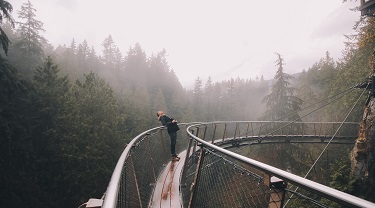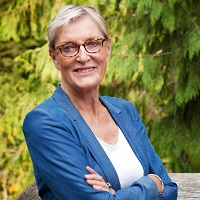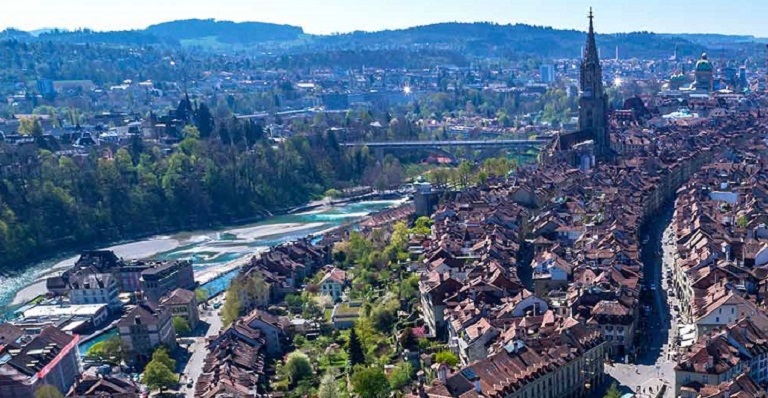Tourism is Canada’s No. 1 service export with international revenues reaching $21.3-billion in 2017, thanks to an all-time high of 20.8 million people visiting the country last year. The sector also supported 736,000 direct and 1.8 million indirect jobs across Canada.
These are big numbers and we certainly see them reflected in the business we do at our properties in Greater Vancouver and our two lodges in the Canadian Rockies. The number of annual visitors to Capilano Suspension Bridge Park in North Vancouver is approaching 1.2 million, of which 63 per cent are international tourists, mainly from the United States. Our biggest non-U.S. markets are Australia, United Kingdom, China, Mexico, Germany and Japan.
Setting the scene: What does Canada’s tourism sector look like right now?
China is an important growth market for us – and Canada in general – particularly this year as we celebrate the Canada-China Year of Tourism. It was reported earlier this year that China has overtaken the UK as the No. 1 source of non-U.S. international tourists to Canada.
This is good news for the tourism sector, particularly tourism-based SMEs like the Capilano Group, but it doesn’t mean we can sit back and wait for the influx of visitors. Far from it. Now is the time to work even harder at ensuring that Canada is uppermost in the minds of international tourists, who are increasingly looking for the type of adventures we offer like outdoor adventures and natural landscapes.
We’re in an extremely crowded and competitive global market. In many cases, our rivals for tourist dollars are in destinations that have more sun, are cheaper, closer, have better flight access, are more culturally homogenous and have huge in-market travel options such as the U.S.
We also need to keep in mind that travel tends to be a luxury spend and is ultra-sensitive to any economic instability or change. The growth and positive sentiment we see today isn’t guaranteed to continue forever, so we must focus on providing a quality experience.
On top of that, Canada isn’t regarded as a low-cost destination. It’s also a long-haul destination for visitors coming from Europe, build or Australia. In Vancouver, we have hotel capacity challenges and a shortage of hotels in the 3- to 4-star category.
Canadian tourism also tends to be seasonal – visitors come for the great outdoors in summer or the snow in winter. There’s also a perception that Canada will always be here, so there’s no rush to visit.
So, how do we deal with these challenges?
We, at the Capilano Group, focus strongly on global marketing through supporting local tourism marketing organizations such as Tourism Vancouver, Destination BC and Destination Canada. We also attend core market travel trade shows such as Showcase Asia, Focus Canada Korea and Canada Corroboree in Australia and participate in sales missions.
Tour operators, who include our products and experiences in their packages and arrange familiarization trips for key influencers in social media and the travel trade, are also an important marketing tool. But we must have the “product” to showcase and that means differentiating ourselves in the global market.
In our case, that means getting the message across that there is only one Capilano Suspension Bridge in the world, one Canadian Rockies, one Stanley Park, and one Vancouver. These are our unique selling propositions.
What I wish I’d known when I started out in the business
In the 35 years since I acquired the Capilano Suspension Bridge and expanded my company, I’ve learned some important lessons:
- Price isn’t important to the luxury market; valued experiences are seen as worth it.
- The value placed on nature, cleanliness, fresh air and open spaces can’t be under-estimated.
- It’s very important to educate the various tourism organizations on your product. They’re at the forefront of the market and can be your strongest advocate.
That brings me to my advice to other tourism sector SMEs starting out or looking to expand in the global market:
- Listen and learn from other businesses that have been there, done that.
- Listen and learn from market experts.
- Don’t expect instant results. Having a product doesn’t automatically mean business comes through the door.
- Take the time to build relationships and establish trust. Expect your product to be tried and tested.
- Educate tourism organizations on your product/experience. They will offer new ideas/experiences and can be instrumental in introducing you to new avenues of business.
We’re in an exciting and growing sector. Let’s make the most of the opportunities to showcase Canada to the world.






